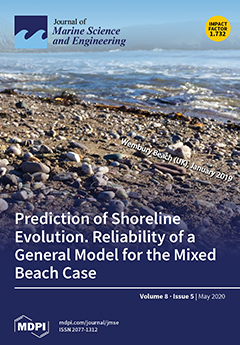The significance of small-strain stiffness (
Gmax) of saturated composite soils are still of great concern in practice, due to the complex influence of fines on soil fabric. This paper presents an experimental investigation conducted through comprehensive bender element tests on
[...] Read more.
The significance of small-strain stiffness (
Gmax) of saturated composite soils are still of great concern in practice, due to the complex influence of fines on soil fabric. This paper presents an experimental investigation conducted through comprehensive bender element tests on
Gmax of marine silty sand. Special attention is paid to the influence of initial effective confining pressure (
), global void ratio (
e) and fines content (
FC) on
Gmax of a marine silty sand. The results indicate that under otherwise similar conditions,
Gmax decreases with decreasing
e or
FC, but decreases with increasing
FC. In addition, the reduction rate of
Gmax with
e increasing is not sensitive to
, but obviously sensitive to changes in
FC. The equivalent skeleton void ratio (
e*) is introduced as an alternative state index for silty sand with various
FC, based on the concept of binary packing material. Remarkably, the Hardin model is modified with the new state index
e*, allowing unified characterization of
Gmax values for silty sand with various
FC,
e, and
. Independent test data for different silty sand published in the literature calibrate the applicability of this proposed model.
Full article





